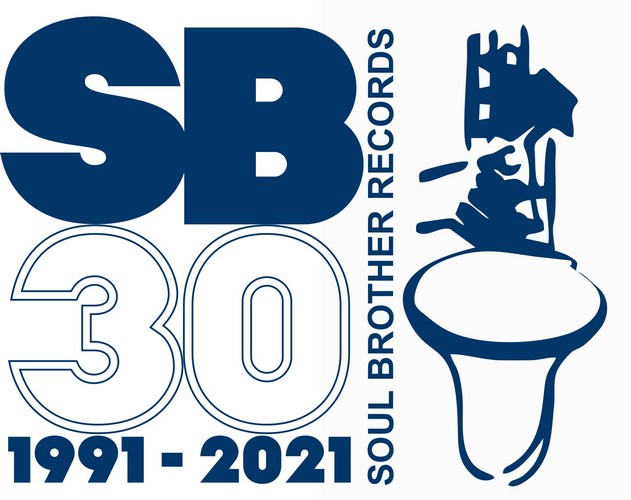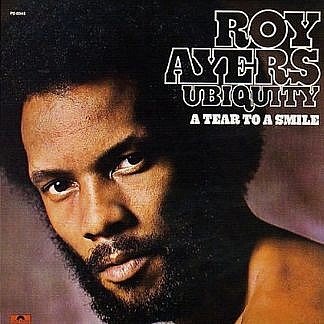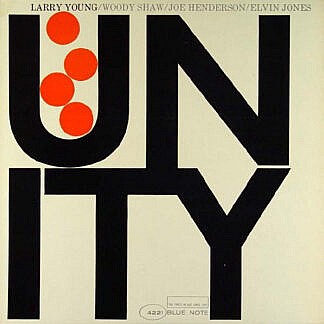Larry Young was born in 1940 in Newark, New Jersey, where he attended Newark Arts High School. His initial foray into music led him towards playing R&B in the fifties, after which time he would go on to release three Soul Jazz albums for Prestige at the turn of the 60’s. He released his first full album, Testifying, at the age of nineteen, a body of work which is is evocative of his initial modal flirtations with the organ, performed primarily in the soul jazz vain similarly to contemporaries Jimmy Smith and Johnny “Hammond” Smith. During the 1960’s he would record some of his most critically acclaimed sets on Blue Note Records and as a sideman with the likes of Lou Donaldson, Kenny Dorham and Hank Mobley. At the end of the sixties, he would flirt with Jazz Fusion, notably appearing on Miles Davis’ Bitches Brew, which would compel him to release more radical output and push the envelope for his organ playing even further, experimenting with modular synthesis and a variety of electronic keyboards. Through the Davis connection, he would hang out with John McClauglin who along with the likes of Rahsaan Roland Kirk, were hanging out with Jimmy Hendrix and would Jam with Hendrix at the Record Plant throughout 1969: a lesser known set of improvised music played between Hendrix and Young is available on vinyl, an incredibly rare album released posthumously after Hendrix’s death. Young would continuously evolve throughout his career, a musical innovator who felt most comfortable at the spear tip of the Jazz and fusion vanguard as evidenced by output of his such as Lawrence of Newark (1975), Larry Young’s Fuel (1975) and Spaceball (1976). A forerunning instrumentalist who pioneered the organ and took it to new musical territories, Young tragically died young at the age of 37 from what are believed to be complications from pneumonia.
Unity is generally considered to be his greatest work, the second album that he released on Blue Note after signing to the label in 1964. The tone of the album is primarily modal, post bop, although there are a few flirtations with free jazz—it must be stated, however, that Unity is not a free jazz album but evokes elements of free playing in certain passages. It is beautifully poised between post-bop and avant garde, showcasing intricate compositions and an unfiltered, deeply melodic cohesion between the players. Unity is emblematic of the supreme talents of Young’s ever-developing talents behind the burner, alongside Joe Henderson on tenor and Woody Shaw on trumpet, both of whom at the time of the recording were core members of Horace Silver’s quintet. It also features Elvin Jones on drums who had recently quit John Coltrane’s band— alongside pianist McCoy Tyner—as Coltrane went deeper into the murky world of spiritual Jazz during his later Impulse period, going all the way over the hill with the Likes of Pharoah Sanders and his wife Alice. Jones’ drumming on Unity is joyful, animated and swinging, his first recorded music post-Coltrane, a band in which he felt that the role for him was becoming increasingly limited the further Trane pushed the spiritual envelope. Jones puts on a superb performance throughout the set and you can grasp a sense of his musical liberation, playing in a group where he can swing again. Noticeable is the absence of a bassist, although this doesn’t leave the rhythm section lacking as Young performs the bass lines on Hammond B3 with consummate ease, underpinning the quartet with the warm, electric sonority of his organ which strafes the scales. A highly coordinated and underrated accomplishment of Young’s playing.
There is a lot of democracy in this album. Young’s comping supports the other musicians, as he uses the organ in a light fingered and cooperative manner—an instrument that can often come across as overpowering when employed in a non-Soul Jazz context. Young manages his instrument with the Midas touch, a tasteful and understated player who finds space around his musicians in which to shine. Moreover, the writing credits are shared between Shaw (Zoltan, The Moontrane, Beyond all Limits) and Henderson (If), the other two tracks being covers from Thelonious Monk and Hammerstein. All of the players are at individual stages in their own musical evolution and the meeting of all of them together on this album creates a wild alchemy where everything merges together beautifully, an album that would be impossible to recreate. Recorded by Rudy Van Gelder, who had an innate understanding of how Jazz should sound, the recording is visceral and fresh and captures the raw essence of the session, the high metallic shimmer of Jones’ drumming peaking beautifully amid a sonic carpet of deep, reverberative organ which Young lays down for his musicians to play over. Hendersons tenor, albeit deeply influenced by Coltrane, is agile and colourful, romantically crooning in parts and igniting short and explosive passages in others, while Shaw’s horn is mercurial, his soloing deeply melodic and contemplative. Album highlights include the Coltrane inspired Moontrane, a blowing session with a beautiful, lyrical solo from Woody Shaw that subtly steps out of the changes, while Beyond all Limits is a cooking number, with all of the players on the session smoking hard…








Reviews
There are no reviews yet.